-
 Bitcoin
Bitcoin $118600
-1.16% -
 Ethereum
Ethereum $3616
-2.94% -
 XRP
XRP $3.174
-10.23% -
 Tether USDt
Tether USDt $1.000
0.01% -
 BNB
BNB $773.4
-0.42% -
 Solana
Solana $189.3
-6.58% -
 USDC
USDC $1.000
0.02% -
 Dogecoin
Dogecoin $0.2406
-10.24% -
 TRON
TRON $0.3098
-1.24% -
 Cardano
Cardano $0.8139
-9.10% -
 Hyperliquid
Hyperliquid $44.01
-2.71% -
 Stellar
Stellar $0.4266
-9.64% -
 Sui
Sui $3.699
-7.29% -
 Chainlink
Chainlink $18.21
-6.60% -
 Hedera
Hedera $0.2465
-9.46% -
 Bitcoin Cash
Bitcoin Cash $512.3
-2.27% -
 Avalanche
Avalanche $24.03
-5.62% -
 Litecoin
Litecoin $112.2
-5.21% -
 UNUS SED LEO
UNUS SED LEO $8.964
-0.26% -
 Shiba Inu
Shiba Inu $0.00001386
-9.81% -
 Toncoin
Toncoin $3.188
-4.76% -
 Ethena USDe
Ethena USDe $1.001
-0.02% -
 Polkadot
Polkadot $4.135
-7.84% -
 Uniswap
Uniswap $10.16
-5.19% -
 Monero
Monero $310.5
-2.84% -
 Bitget Token
Bitget Token $4.702
-2.53% -
 Dai
Dai $0.0000
0.01% -
 Pepe
Pepe $0.00001270
-9.07% -
 Aave
Aave $290.7
-5.84% -
 Bittensor
Bittensor $424.7
-5.28%
How to balance the position when the quarterly MACD crosses but the weekly crosses?
A bullish quarterly MACD cross suggests long-term strength, but a bearish weekly cross warns of short-term weakness, requiring careful position balancing.
Jun 29, 2025 at 05:08 am
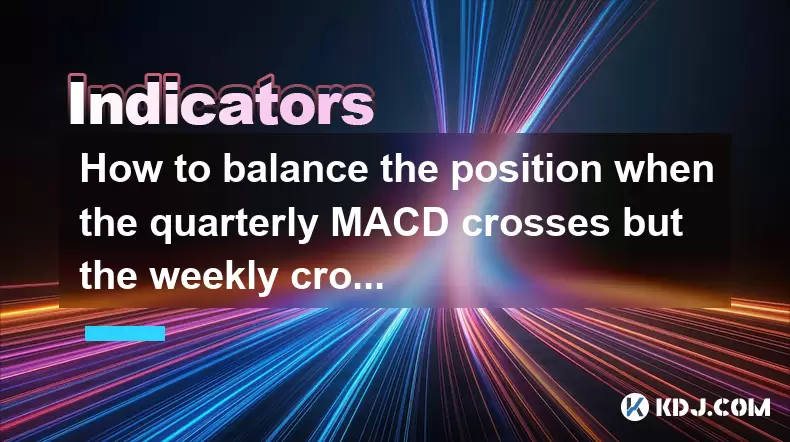
Understanding the MACD Cross in Different Timeframes
The Moving Average Convergence Divergence (MACD) is a widely used technical indicator among cryptocurrency traders. It helps identify potential trend reversals and momentum shifts. When traders refer to a MACD cross, they typically mean the point at which the MACD line crosses above or below the signal line. This event can occur on different timeframes — such as the weekly and quarterly charts — leading to conflicting signals.
In the context of cryptocurrency trading, where volatility is high and trends can reverse quickly, understanding how to interpret divergent MACD signals across timeframes becomes crucial. The quarterly chart offers a broader view of long-term price action, while the weekly chart reflects more immediate market sentiment. A situation where the MACD crosses bullish on the quarterly chart but bearish on the weekly chart creates ambiguity that needs careful handling.
Identifying Conflicting Signals Across Timeframes
When analyzing both the weekly and quarterly MACD, traders often encounter situations where these two indicators give opposing signals. For example:
- On the quarterly chart, the MACD line crosses above the signal line, indicating a potential long-term bullish trend.
- Meanwhile, on the weekly chart, the MACD line crosses below the signal line, suggesting a short-term bearish move.
This divergence highlights the complexity of multi-timeframe analysis. The quarterly timeframe may suggest accumulation or a fundamental shift in sentiment, while the weekly timeframe could reflect profit-taking or temporary weakness. Traders must avoid making impulsive decisions based solely on one timeframe.
Evaluating Market Context Before Balancing Positions
Before adjusting your position due to conflicting MACD signals, it's essential to evaluate the broader market environment. In crypto markets, external factors like regulatory news, macroeconomic events, or whale activity can influence price behavior significantly.
- If the quarterly MACD cross occurs near a major support level and the weekly MACD cross is near an overbought area, this might indicate a pullback within a larger uptrend.
- Conversely, if the weekly MACD cross happens after a strong rally and the quarterly MACD has just turned bullish, it could be a sign of early-stage accumulation following a correction.
Traders should also consider volume patterns and order book depth when evaluating these scenarios. High volume during a weekly bearish cross may confirm short-term selling pressure, while sustained buying interest on the quarterly chart suggests longer-term strength.
Strategies for Position Balancing in Conflicting MACD Scenarios
Balancing your position when faced with conflicting MACD signals requires a structured approach. Here are several strategies you can apply:
- Use partial entries and exits: Instead of taking a full position, enter in tranches. For instance, take a small long position based on the quarterly MACD bullish cross, and wait for confirmation on the weekly chart before adding more.
- Hedge using derivatives: If available, use futures or options to hedge against short-term volatility while maintaining exposure to long-term trends.
- Adjust stop-loss levels: Place tighter stop-loss orders on short-term positions derived from the weekly MACD, while allowing more room for positions aligned with the quarterly MACD.
- Monitor higher timeframes for confirmation: Wait for the monthly or yearly MACD to confirm the direction suggested by the quarterly chart before committing heavily to any trade.
- Combine with other indicators: Use RSI, Fibonacci retracements, or moving averages to filter out false signals and improve timing.
Each of these strategies allows traders to remain flexible and responsive to evolving conditions without overcommitting capital prematurely.
Practical Steps to Execute Balanced Positioning
To implement balanced positioning effectively, follow these detailed steps:
- Analyze both timeframes independently first: Begin by interpreting the weekly and quarterly MACD signals separately. Understand what each cross implies on its own before trying to reconcile them.
- Compare with historical data: Look at past instances where similar MACD crossovers occurred on both timeframes. Did the price respect the quarterly signal despite short-term weakness? How did it behave afterward?
- Set up alerts for key levels: Use trading platforms to set alerts for when the weekly MACD re-crosses or when certain support/resistance levels break.
- Use dynamic position sizing: Allocate smaller portions of your portfolio to trades with uncertain signals and increase gradually as clarity emerges.
- Document your decision-making process: Keep a trading journal to track how well your strategy performs in real market conditions.
These practical steps ensure that traders do not act on emotion but rather on a clear, predefined methodology tailored to their risk tolerance and investment goals.
Frequently Asked Questions
Q1: Can I ignore the weekly MACD if the quarterly MACD shows a stronger trend?
While the quarterly MACD gives a broader perspective, ignoring the weekly MACD entirely can expose you to unnecessary short-term risk. It’s better to acknowledge both signals and adjust your entry points accordingly.
Q2: How do I determine which timeframe takes precedence in conflicting MACD scenarios?
There is no universal rule, but many traders prioritize the higher timeframe (like the quarterly) for long-term investments and the lower timeframe (like the weekly) for short-term trades. Your trading style and objectives will dictate which one to emphasize.
Q3: Should I close my entire position if the weekly MACD turns bearish while the quarterly remains bullish?
Not necessarily. You can reduce your exposure partially and let the remaining portion ride with the quarterly trend, especially if fundamentals or long-term indicators still support the bullish case.
Q4: What tools help visualize MACD conflicts across timeframes more clearly?
TradingView and other advanced charting platforms allow overlaying multiple timeframes on a single chart. Using custom scripts or built-in features like "multi-timeframe MACD" can help visualize discrepancies and make informed decisions.
Disclaimer:info@kdj.com
The information provided is not trading advice. kdj.com does not assume any responsibility for any investments made based on the information provided in this article. Cryptocurrencies are highly volatile and it is highly recommended that you invest with caution after thorough research!
If you believe that the content used on this website infringes your copyright, please contact us immediately (info@kdj.com) and we will delete it promptly.
- Score Big This Season with the BetMGM Bonus Code: Your Ticket to MLB Bonus Bets!
- 2025-07-24 06:50:12
- Bitcoin: From Digital Gold Rush to Evolving Asset Class
- 2025-07-24 06:50:12
- Shiba Inu's $1 Dream: Major Hurdles and Community-Driven Hope
- 2025-07-24 06:30:13
- Ethereum, Altcoins, and BlockDAG: Navigating the Crypto Landscape
- 2025-07-24 06:30:13
- Dogecoin's Resistance Retest: Parabolic Move on the Horizon?
- 2025-07-24 04:50:13
- WLFI, Vaulta Token, and Holdings: Navigating the Web3 Revolution
- 2025-07-24 05:30:13
Related knowledge
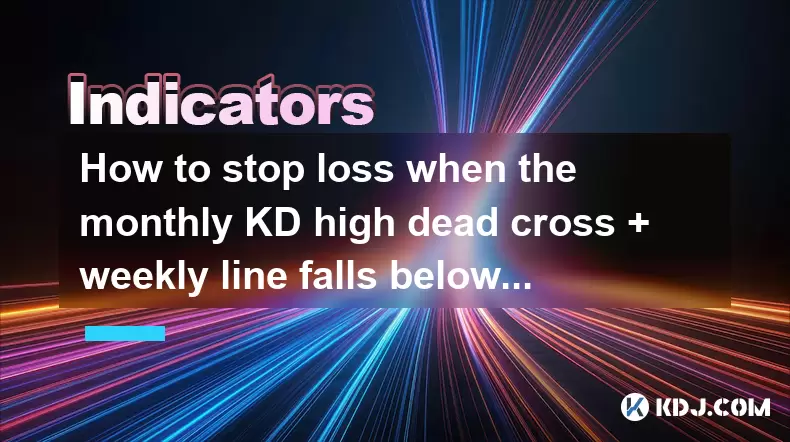
How to stop loss when the monthly KD high dead cross + weekly line falls below the 20-week line + daily line pulls back on the 5-day line?
Jul 24,2025 at 07:00am
Understanding the Indicators: KD, Weekly, and Daily Moving AveragesWhen traders analyze cryptocurrency price movements, they often rely on technical i...
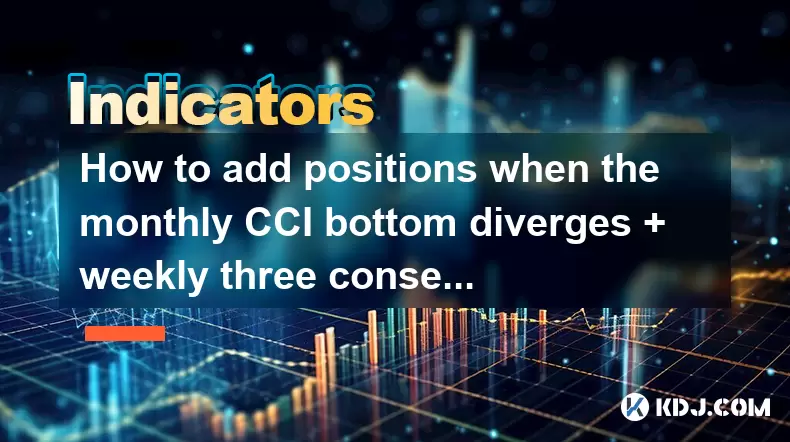
How to add positions when the monthly CCI bottom diverges + weekly three consecutive Yang + daily line gap is not filled?
Jul 24,2025 at 05:22am
Understanding the Monthly CCI Bottom DivergenceWhen analyzing the monthly CCI bottom divergence, traders are identifying a potential reversal signal i...
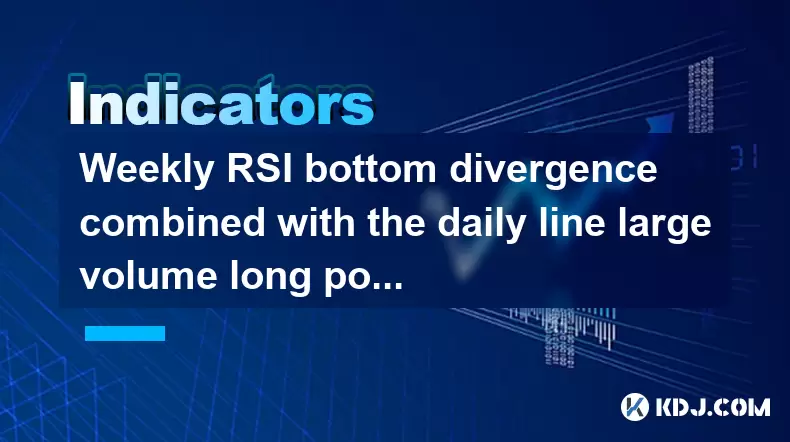
Weekly RSI bottom divergence combined with the daily line large volume long positive start signal
Jul 24,2025 at 05:28am
Understanding RSI Bottom Divergence in Cryptocurrency TradingIn the context of cryptocurrency trading, RSI bottom divergence is a powerful technical s...
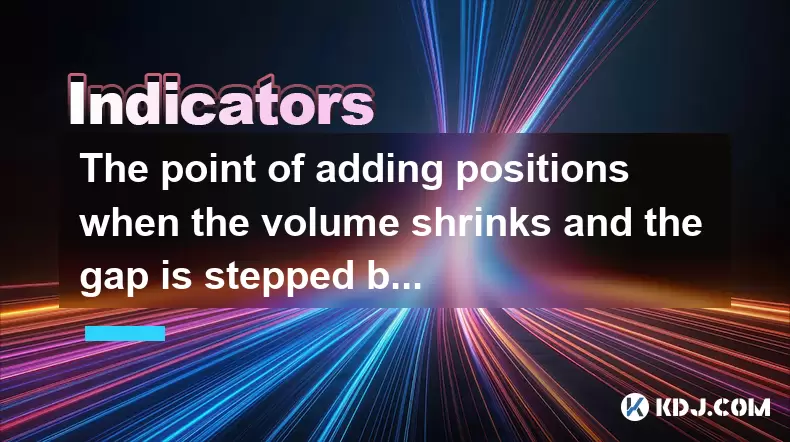
The point of adding positions when the volume shrinks and the gap is stepped back after the gap is jumped
Jul 24,2025 at 04:56am
Understanding the Gap Jump Phenomenon in Cryptocurrency TradingIn cryptocurrency trading, a gap jump occurs when the price of a digital asset opens si...
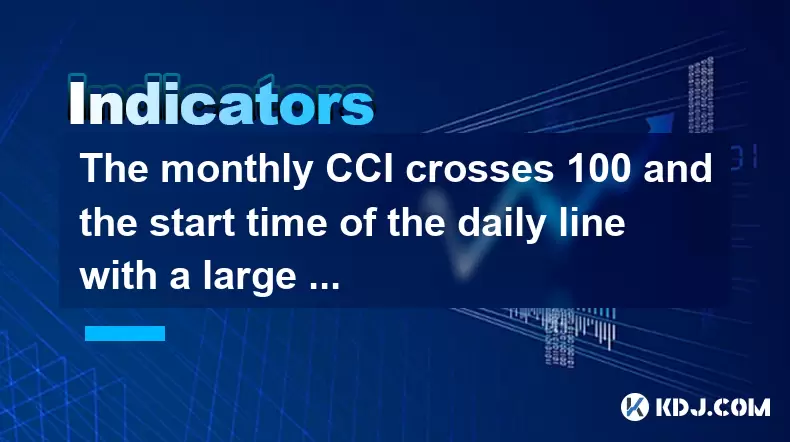
The monthly CCI crosses 100 and the start time of the daily line with a large volume positive line
Jul 24,2025 at 03:56am
Understanding the Monthly CCI Indicator and Its Significance at 100The Commodity Channel Index (CCI) is a momentum-based oscillator used to identify o...
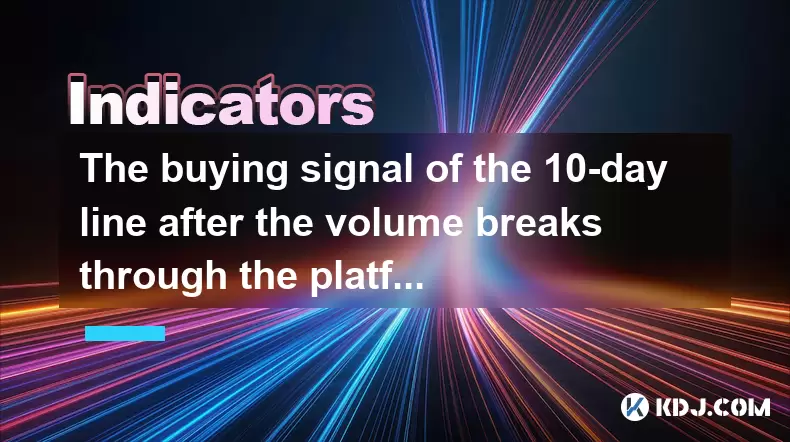
The buying signal of the 10-day line after the volume breaks through the platform
Jul 24,2025 at 06:00am
Understanding the 10-Day Moving Average in Cryptocurrency TradingIn cryptocurrency trading, moving averages are essential tools for identifying trends...

How to stop loss when the monthly KD high dead cross + weekly line falls below the 20-week line + daily line pulls back on the 5-day line?
Jul 24,2025 at 07:00am
Understanding the Indicators: KD, Weekly, and Daily Moving AveragesWhen traders analyze cryptocurrency price movements, they often rely on technical i...

How to add positions when the monthly CCI bottom diverges + weekly three consecutive Yang + daily line gap is not filled?
Jul 24,2025 at 05:22am
Understanding the Monthly CCI Bottom DivergenceWhen analyzing the monthly CCI bottom divergence, traders are identifying a potential reversal signal i...

Weekly RSI bottom divergence combined with the daily line large volume long positive start signal
Jul 24,2025 at 05:28am
Understanding RSI Bottom Divergence in Cryptocurrency TradingIn the context of cryptocurrency trading, RSI bottom divergence is a powerful technical s...

The point of adding positions when the volume shrinks and the gap is stepped back after the gap is jumped
Jul 24,2025 at 04:56am
Understanding the Gap Jump Phenomenon in Cryptocurrency TradingIn cryptocurrency trading, a gap jump occurs when the price of a digital asset opens si...

The monthly CCI crosses 100 and the start time of the daily line with a large volume positive line
Jul 24,2025 at 03:56am
Understanding the Monthly CCI Indicator and Its Significance at 100The Commodity Channel Index (CCI) is a momentum-based oscillator used to identify o...

The buying signal of the 10-day line after the volume breaks through the platform
Jul 24,2025 at 06:00am
Understanding the 10-Day Moving Average in Cryptocurrency TradingIn cryptocurrency trading, moving averages are essential tools for identifying trends...
See all articles

























































































